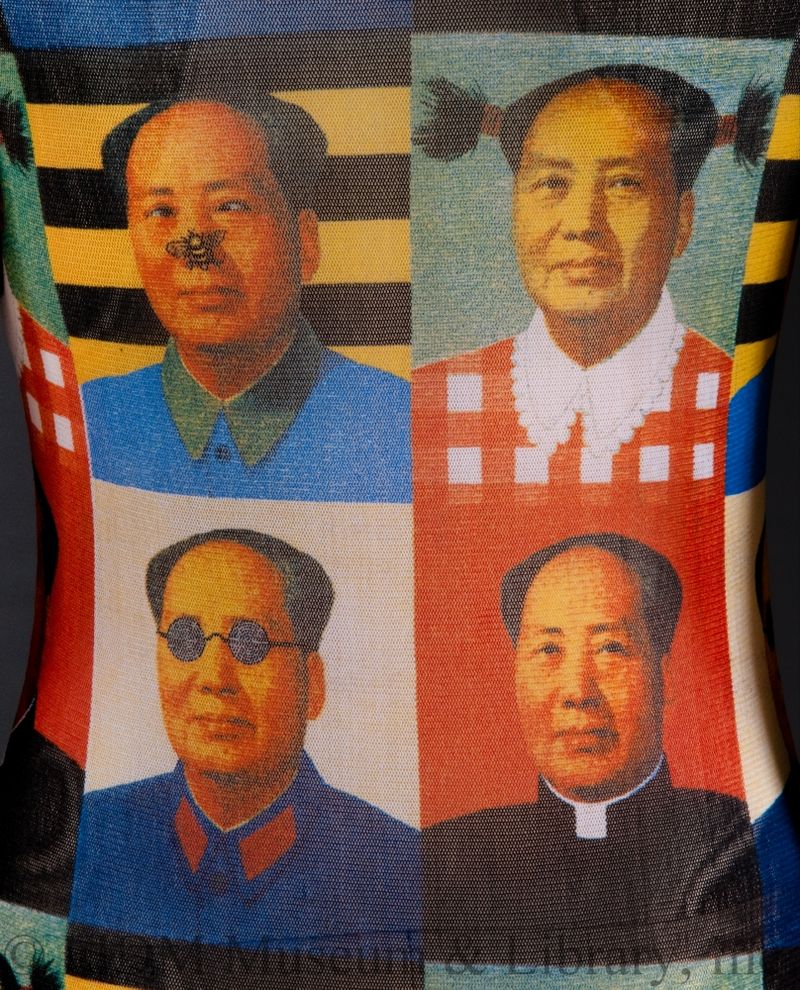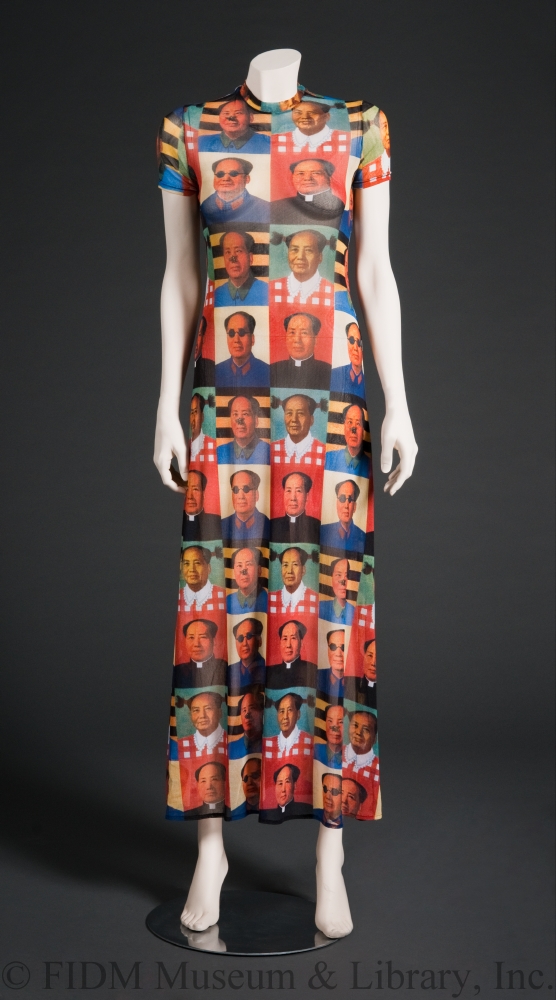 Mao Dress detail
Mao Dress detail
Vivienne Tam
Spring/Summer 1995
Museum Purchase
2007.5.2
Vivienne Tam's (b. 1958) Mao collection was a breakout success. Though she'd been designing under her own name since the early 1980s, it was her irreverent garments featuring Mao Zedong's image that won the designer widespread name recognition in 1995. This collection, featuring "cool and clever pastel net slip dresses, easy-to-work suits, [and] Mao tees" earned Tam her first mention in Vogue, which dubbed her Designer of the Month in February 1995.1 Presenting four portraits of Mao in distinctly un-revolutionary garb, Tam's Mao dress is made from a lightweight, stretchy synthetic mesh. Fitting the body like a second-skin, it brings the wearer (and observer) into dialogue with Mao Zedong's legacy.
The Warholesque Mao images were the result of a collaboration between Tam and Chinese born/New York based artist Zhang Hongtu (b. 1943). After leaving China in 1982, Zhang began working with Mao's image, creating satirical portraits that questioned Mao's political stature and place in Chinese history. During his reign as leader of the Communist Party of China (1949-76), Mao's portrait was seen throughout the country in both public and private spaces. During the Cultural Revolution (1966-76), Mao's image was even more ubiquitous, used as a reminder of his authority and to spur citizens to greater participation in China's new society. By the 1990s, Mao was being reevaluated, with many Chinese artists using Mao's image to question the repercussions of his legacy and the current state of China. Born in China and raised in Hong Kong, Vivienne Tam was not unaware of the complicated impact of Mao's portrait.
When Tam decided to place Zhang's provocative images of Mao on her line of shirts and dresses, it provoked controversy in both China and the United States. Several Hong Kong garment manufacturers refused to produce her Mao designs. When Tam finally located a workshop willing to produce the line, it was shipped to retailers in plain brown wrapping. Though Tam recognized the politically charged nature of her collaborative work with Zhang, her goal was not overtly political; the designer "wanted to "loosen up Zhang's political art with a bit of fashion."2
1 "Fashion Front" Vogue (Feb 1, 1995) 84.
2 Quoted in Tu, Thuy Linh N. The Beautiful Generation: Asian Americans and the Cultural Economy of Fashion (Durham, NC: Duke University Press, 2011) 146.



Oh my gosh, this dress makes me smile. How completely funny!